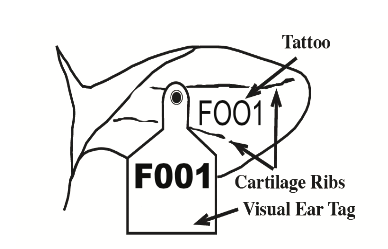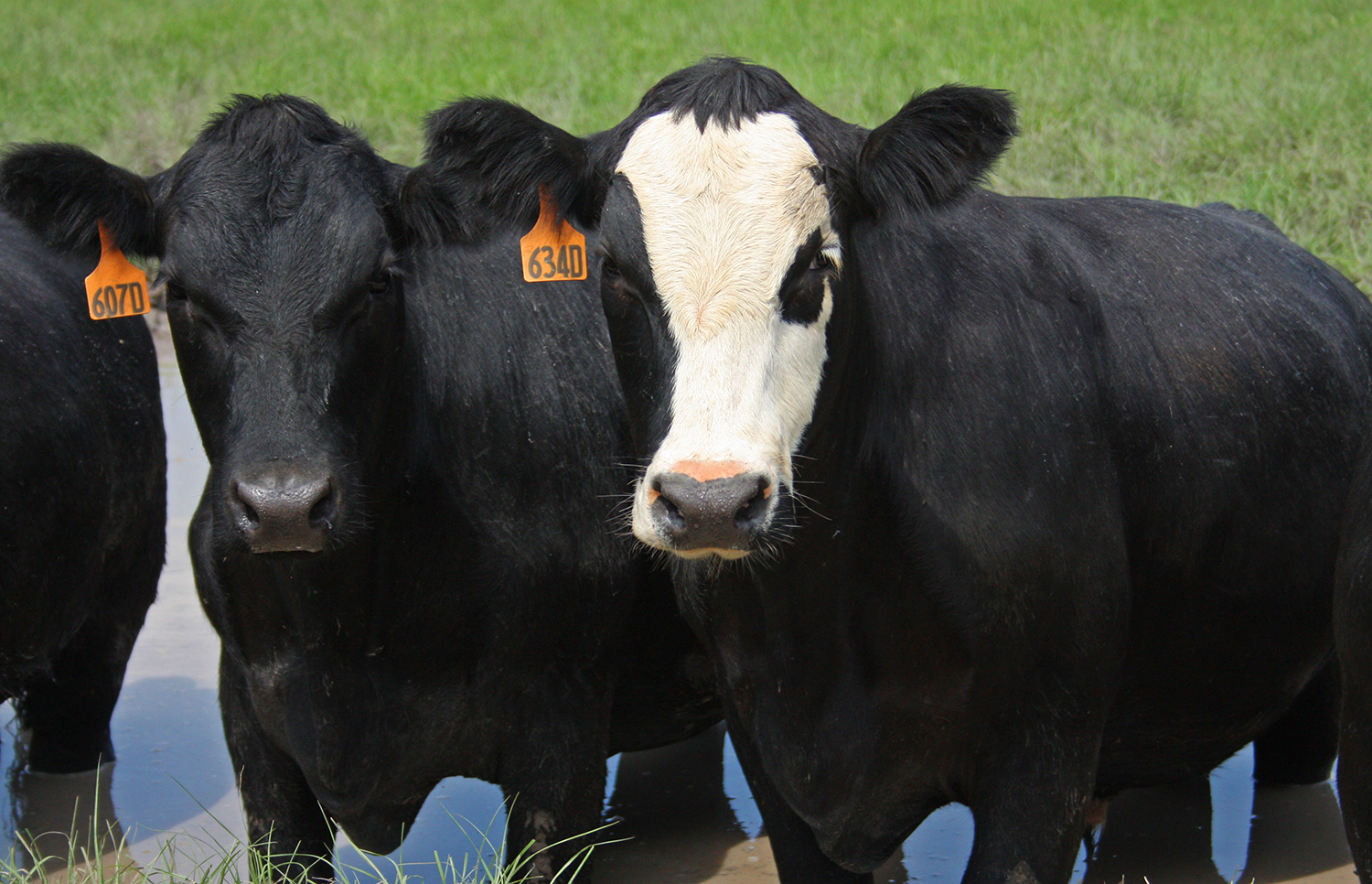Beef

Know the essentials of beef cattle record keeping to determine the best system for your operation.
Records are a vital component to achieving a more advanced level of management for a beef cattle producer. Beef cattle record keeping is a technique and tool to document and analyze precise information for an operation.
Different approaches to record keeping can be taken. These include tracking whole herd or individual animals and using written or technology-based methods. The system chosen should be practical in application, provide unique animal identification that is permanent and easily recognizable, and work to maintain and increase efficiency and profitability.
Whole-Herd Record Keeping
Maintaining whole-herd records requires recording cow, bull, and calf inventories at each phase of the yearly production cycle, recording weaning or market weights, and using that data to monitor herd performance. Standard performance analysis (SPA) measurements, initiated by the National Cattlemen’s Beef Association (NCBA), provide an analysis of whole- herd performance.
The production cycle begins with the breeding season. Following completion of the breeding season, pregnancy diagnosis can be performed (see Extension publication ANR-1417, “Beef Cow Pregnancy Examination”). First record the number of bred and open (nonpregnant) cows and heifers. Then calculate the pregnancy percentage by dividing the total number of bred cows and heifers by the total number of cows and heifers exposed during the breeding season (table 1). This gives you the pregnancy percentage, which is the first indication of herd reproductive efficiency. The information also aids in monitoring for any reproductive health problems.
After the calving season, calculate the calving percentage by dividing the number of calves born by the number of cows and heifers exposed during the breeding season (table 1). The calving percentage provides an appraisal of calf death loss due to dystocia (calving difficulty), spontaneous abortion, or any other reproductive health problems.
Once calves are weaned, calculate a weaning percentage by dividing the total number of calves weaned by the number of cows and heifers exposed (table 1). The weaning percentage is an assessment of calf death loss between calving and weaning. At weaning or when marketing calves after weaning, record an average weaning or market weight. This is used to indicate pounds weaned per cow exposed. Calculate this by multiplying the average weaning or average market weight by the weaning percentage (table 1). The calculation of pounds weaned per cow exposed provides an evaluation of how the cow herd ultimately performed. It essentially answers the herd production question, How many pounds of feeder calf per cow did my cow herd produce for me to market?
Table 1. Calculations for a Herd of 50 Cows Using Standard Performance Analysis
| Pregnancy Percentage (%) | Calving Percentage (%) | Weaning Percentage (%) | Pounds Weaned per Cow Exposed |
|---|---|---|---|
| 45 bred cows | 2 calves died at birth | 2 calves died at weaning | 500 lbs avg weaning weight |
| 45/50=0.90, 0.90×100= 90% | 43/50=0.86, 0.86×100= 86% | 41/50=0.82, 0.82×100= 82% | 500×0.82= 410 lbs per cow exposed |
Individual Animal Record Keeping

Figure 1. Cattle ear tag and tattoo diagram
An individual animal approach to beef cattle record keeping involves recording specific performance data for each animal, such as identification number, birth date, calf sex, sire, dam, breed composition, weaning weight, and more, if desired. To be effective, an animal identification system must first be established.
An identification system should provide a unique number for each animal. Numbering systems should be designed to be simple. The international year/letter designation for animal identification (table 2) supplies a method for unique identification for each animal. Using this system allows 22 years before another animal has the potential to have the same identification number.
The international year/letter numbering system designates a specific letter for each birth year along with an individual number, which can be based on birth order. For example, the international year letter code for 2018 is the letter F. The first calf born that year is therefore assigned an animal identification of F001.
In applying the identification number to each animal, make sure that the number is easy to read and permanent. It is best to use a combination of two different methods, such as ear tags, which are temporary and easy to read, and an ear tattoo, which is permanent (figure 1).
Table 2. International Year/Letter Designations for Animal Identification
| Year | Letter |
|---|---|
| 2013 | A |
| 2014 | B |
| 2015 | C |
| 2016 | D |
| 2017 | E |
| 2018 | F |
| 2019 | G |
| 2020 | H |
| 2021 | J |
| 2022 | K |
| 2023 | L |
| 2024 | M |
| 2025 | N |
| 2026 | P |
| 2027 | R |
| 2028 | S |
| 2029 | T |
| 2030 | U |
| 2031 | W |
| 2032 | X |
| 2033 | Y |
| 2034 | Z |
Record-Keeping Methods
Whether you prefer hand writing your data or using technology, there are resources available to make the process easier.
The National Cattlemen’s Beef Association (NCBA) offers the Integrated Resource Management (IRM) Red Book. This pocket-sized annual record book contains forms and reference information to record cattle inventory, breeding and calving activity, body condition scores, herd health, and pasture usage.
For those who prefer a technology-based approach, specialized record-keeping systems are available that use internet or computer software. These systems allow access to herd records via any device with internet capability: desktop or laptop computers, tablets, smartphones, etc. Technology-based record systems maintain animal inventories, including animal production history; they provide a calculation of adjusted weights, ratios, frame scores, and average calving intervals; and they track herd health and medical treatments, animal movement, pasture usage, and more.
Maintaining records of herd health and medical treatments is an essential part of the Beef Quality Assurance (BQA) program (see Extension publication ANR-1285, “Alabama Beef Quality Assurance: Maintaining Proper Records”). Both the hand-written and technology-based record systems facilitate a detailed method to record treatment dates, medication names, lot and serial numbers, dosages, routes of administration, booster and withdrawal dates, and more.
Breeding and calving records can assess a cow or heifer’s reproductive proficiency by tracking when in the designated breeding and calving season a calf was produced. Cow performance over time can be evaluated for reproductive efficiency by reviewing statistics, such as an average calving interval or the average number of days from one calving date to the next. Technology-based systems allow for easier management and calculation of individual animal production history and statistics in order to more thoroughly analyze the performance of specific animals.
In analyzing an individual cow or sire’s production, the average of its offspring’s weaning weights, both actual and adjusted, indicates the level of production within the herd. Actual weaning weights for each individual calf are collected between the ages of 160 and 240 days. They are then adjusted to a consistent 205-day age standard and for the age of the dam. Ratios based on this adjusted 205-day weight are calculated within a contemporary group, defined by a 90-day range in calf age, calf sex, actual weights collected within one week’s time, and management.
In selecting replacement heifers, individual heifer performance combined with a heifer’s dam and sire production history can be utilized along with visual appraisal to attain improved selection. Individual animal statistics expedite specific culling of cows and heifers on performance measurements, validate replacement heifer selections, and aid in selecting superior herd sires.
Summary
Beef cattle record keeping is a vital tool for making more informed production management decisions. Record keeping reveals a herd’s current production level, identifies where inefficiencies exist, and provides information to make improvements.
The Alabama Beef Cattle Improvement Association (BCIA) provides the Alabama BCIA Commercial Record Keeping Program. This program utilizes an internet-based specialized record-keeping system and facilitates distribution of NCBA IRM Red Books annually. For more information, contact the Alabama BCIA (www.albcia. com) or your Alabama Extension regional Animal Science and Forages agent.
Download a PDF of Beef Cattle Record Keeping Basics, ANR-2488.

